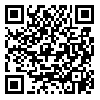BibTeX | RIS | EndNote | Medlars | ProCite | Reference Manager | RefWorks
Send citation to:
URL: http://sjsph.tums.ac.ir/article-1-136-en.html
Materials and Methods: In this cross-sectional survey data were collected, using the Nordic Musculoskeletal Disorders Questionnaire (NMQ) and LUBA Checklist, on 193 randomly selected registered assembly workers from 8 units of the assembly line of ITMC, Shiraz, Iran. The statistical tests used were as follws: 1.The qui-square test, to determine factors causing MSDs 2. One-way analysis of variance and Kruskal-Wallis to determine postural loading index 3. Logistic multiple regression analysis, to determine risk factors.
Results: Lower-back symptoms were found to be the most prevalent problem (67.9%.) among the workers. The findings also showed that the upper limb disorders were significantly associated with age, sex, job, daily working time, work evironment conditions, and twisting (P<0.01). Based on LUBA, a large majority of the workers (89.64%) had experienced high postural loading (PLI = 5). In addition, significant associations were found between postural loading and symptoms of upper limbs and units of work (P <0.05).
Conclusion: Based on these findings, MSDs are prevelent among Telecommunication Manufacturing Company in Shiraz, Iran. The most important factors likely to cause MSDs are postural loading on the limbs and unfavourable working conditions. Interventional programs aimig at preventing musculoskeletal problems among assembly line workers should focus on reducing postural loading.
Received: 2007/11/30 | Accepted: 2009/02/8 | Published: 2013/08/9
| Rights and permissions | |
 |
This work is licensed under a Creative Commons Attribution-NonCommercial 4.0 International License. |





